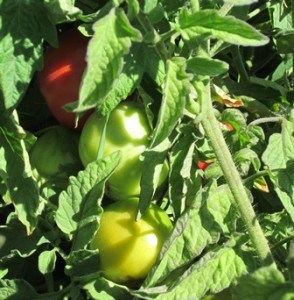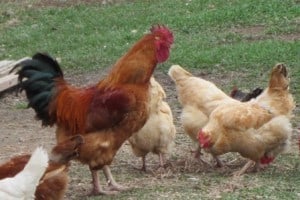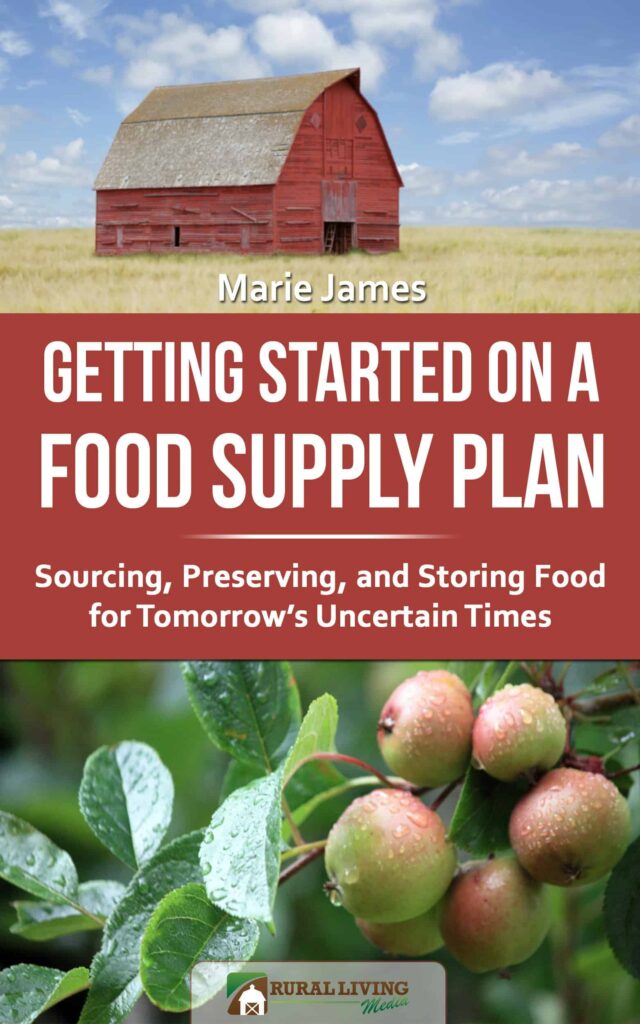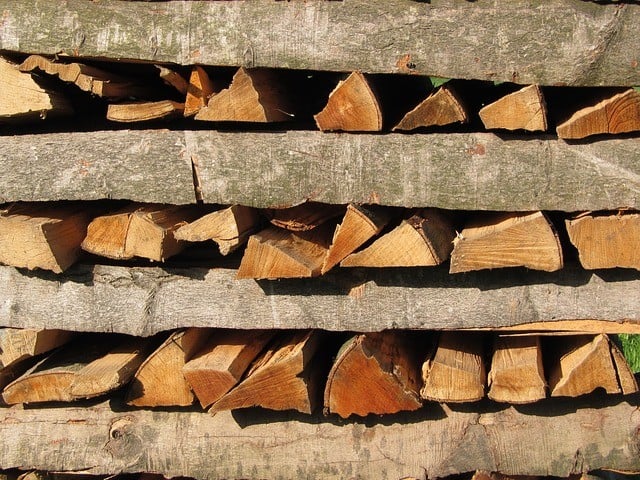If you are reading this, you know it’s important to be preparing for food crisis challenges coming our way.
The month of September has been designated National Preparedness Month in the United States.
Recently the White House made its annual announcement about this month of preparations.
The 2012 press release says,
“During National Preparedness Month, we renew our commitment to promoting emergency preparedness in homes, businesses, and communities nationwide, and to building an America more ready and resilient than ever before.”
It goes on to mention the possibility of “disasters of all types — from cyber incidents and acts of terrorism to tornadoes and flooding.”
The release suggests that “individuals and families can also take action by building a disaster supply kit with food, water, and essential supplies in case of emergency, and by developing and sharing an emergency plan with their loved ones.”
We agree that it’s important to have an emergency plan to cover basic needs for a short-term disruption.
Check out our book “Getting Started on a Food Supply Plan: Sourcing, Preserving, and Storing Foods for Tomorrow’s Uncertain Times”
Preparing for Food Crisis – what can you do?
One of the first things we did was to buy a sun oven.
It harnesses the sun’s energy.
It can boil water, as well as bake and cook food.
But what about a long-term economic situation that affects us much differently than any local weather event or national incident?
Do we need to take this possibility seriously?
Yes—without a doubt, we do!
But wait—won’t everything just continue the way it has, up and down, rise and fall, essentially the same?
Won’t we just resume, in due time, the wonderful growth and prosperity we have enjoyed as a nation?
Sadly, the answer to those questions is “no.”
Things are different.
The sustainable recovery that we all hope for is now nearly impossible without some real changes in the way our nation operates.
The normalcy bias
As a people, we are captivated by what is called “the normalcy bias.”
We have expectations of what normally happens in various situations and circumstances.
This is why many responsible people fail to act when there is sufficient evidence that a real problem is at hand.
According to Wikipedia, “the normalcy bias, or normality bias, refers to a mental state people enter when facing a disaster.
It causes people to underestimate both the possibility of a disaster occurring and its possible effects.”
One example is the response of many people when “the unsinkable Titanic” sustained serious damage.
The Titanic can’t sink. Regardless of what I see, feel and observe…the Titanic can’t sink.
Many Titanic passengers lost their lives because of this normalcy bias: the belief that everything will stay the way it was or is or should be.
Is that you when it comes to preparation for any kind of disastrous event?
Our encouragement to you is to ACT based on what you see and observe and sense, not on what you believe “should” happen.

Preparing for whatever comes our way
For several weeks now, the Rural Living Today team has been planning some fall blog posts and Rural Living Insider articles about weathering the increasing economic challenges we see on the horizon.
We didn’t even realize that each year since 2004, September has been earmarked for national preparedness in the U.S.
It’s our hearts and our gut feelings that have been urging us to prepare for the coming year and to encourage our readers to do so as well.
Many of you live in countries other than the U.S., but it seems every nation is affected in some way by the global economic situation.
No one is immune to its effects.
Chances are you have been preparing for “something” for many months or years.
If so, you’re a step ahead in the game.
But even if you haven’t, it’s not too late to start from scratch.
It would be wise for each of us to evaluate our own individual risks and prepare accordingly.
Risks and vulnerability vary from one person and family to another, depending largely on geographic areas and types of communities.
Preparation factors include personal skills, equipment at hand, family demographics, and medical situations.
For many years we lived in a prominent earthquake zone, where we were always urged to keep emergency supplies.
One of our homes was near a river valley that flooded annually.
Though our house high on a ridge was never in danger, supply routes were often cut off for days or weeks at a time.
Even the effect of an unusually heavy snowstorm was evident in grocery stores where we saw empty freezer cases and sparsely lined shelves.
In 1999, some people stashed food and supplies after hearing predictions of doom for Y2K.
Most of us remember clearly how the events of September 11, 2001, affected our personal lives and those of friends and strangers.
We’re all aware that any of a number of situations could put a kink in our daily routines and put us in a position where self-sufficiency will be of the utmost importance.
Preparing for Food Crisis Challenges Coming Our Way at Rural Living Today
Keep learning about sustainable living topics like gardening and livestock.
It should be a goal to maintain personal stability as prices and supply of food and other vital needs continue to fluctuate.
We have practical tips as well as some inspiring stories of people discovering the joys of simplified living and community cooperation.
Due to some exciting recent developments, our own family is moving forward in our quest for further self-sufficiency.
Prepare yourself.
Buy a solar oven and/or a rocket stove.
Make a food plan.
Figure out how you will purify water.

Check out some of our favorite resources!
In the meantime, do you feel the need to learn some basic sustainability skills?
Do you wonder how you could raise much food in your backyard or on a small farm?
Want to know how to prepare your family for changes?
Should you get chickens and a rooster?
Beekeeping provides honey plus multiple additional sources for income.
We maintain a list of some of our favorite books, magazines, websites, blogs, and other sources of info on sustainable living topics here on our RLT Resources page.
In addition to plenty of nonfiction information sources, there are some good fiction options for long fall and winter evenings.
You can enjoy a great story while learning more about living off the land.
When our children were young, we read the Little House on the Prairie series each year.
I think those books and others, like Bethany’s favorite My Side of the Mountain, instilled in our kids a love for this rural life that they are now sharing with their own children.
Thanks to Louis Lamour novels they even have an idea how to trap and dress a wild coon or beaver. Who knows, that may come in handy some day!

Need help getting started?
Buy Getting Started on a Food Supply Plan
Getting Started on a Food Supply Plan: Sourcing, Preserving, and Storing Food for Tomorrow’s Uncertain Times by Marie James of Rural Living Today
Have you ever wondered how you’d feed your family if the retail grocery store system failed?
Do rising prices and declining food quality make you want to take matters into your own hands?
Getting Started on a Food Supply Plan: Sourcing, Preserving, and Storing Food for Tomorrow’s Uncertain Times will help you create a system that will raise your level of preparedness, increase your self-sufficiency, and provide peace of mind.
It covers important topics about raising your own food, finding local sources, home preserving, cooking food, and storing food.
There is introductory information along with links to numerous helpful resources in print and online.
- Benefits of Fermented Foods
- How to Store Food Long Term
- Ways to Beat Stockpiling and Panic Buying
- Survival Food: A Comprehensive Guide for Beginners
- Mini Milking Cows: What Are Small Breed Milk Cows?
- Best Meat Chickens: The Top Options
- Raising Ducks: What You Need to Know
- What Are Fermented Foods and Beverages


Looking forward to your fall articles! The team at RLT has a wise and personal approach to writing and living that offers genuine and tangible encouragement. Thanks for blessing us all!
I think the Feds messed up. They are urging local Emergency Response Organizations to use the Zombie theme to attract attention to this months efforts. The thinking stated is that if you are ready for a zombie apocalyse they you are ready for anything. I guess they didn’t think that one through very much. To suvive a Zombie apocalyse everyone knows you need guns and lots and lots and lots of ammo.
Thanks for another great post.
Have a blessed weekend. ♥
A great post filled with so much good information — especially nowadays! Thank you so much for sharing at Rural Thursdays. xo
Glad to see you all here :) Our RLT community has a good foundation to build on–our interests in homesteading and sustainable living will come in handy. Hope you’ll share your ideas with the rest of us, too.
Thank you so much for sharing on Natural Living Mondays! We started saving and preparing last year for the “just in case SHTF” Learning skills like natural healing and food preservation are always great places to start. I will be following your series!
Amanda, we’re happy to be part of Natural Living Mondays. It sounds like lots of us are on the same path and can share ideas.
Congratulations! You were featured on Natural Living Mondays! I cant wait to see what great things you have in store this week. Thanks so much! <3